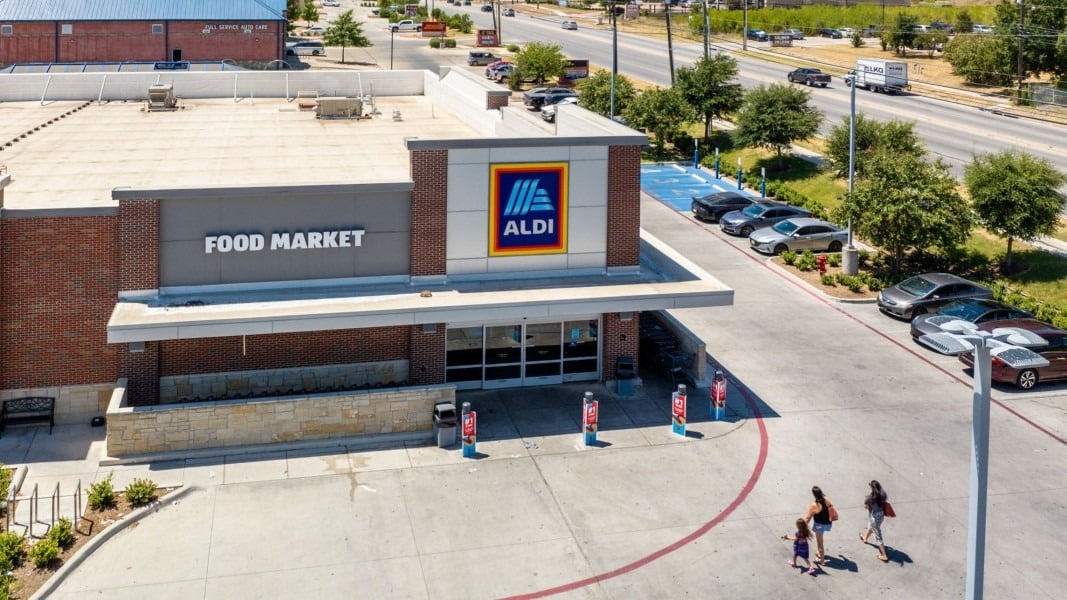German discounter is moving into more conventional big store territory in a fiercely competitive market
Aldi has been on a shopping spree in the US. Earlier this month it announced it would buy the Winn-Dixie and Harveys supermarket chains, expanding in a market where big stores still reign supreme.
The deal shows a change in direction at the business. After it opened its first US store in 1976, Aldi became known for selling cheap own-brand products in small shops — the antithesis of a giant store stocked with tens of thousands of branded goods.
With its takeover of Southeastern Grocers, which owns Winn-Dixie and Harveys, it is moving into more conventional supermarket territory.
“Everyone is kind of jostling to scale,” said Neil Saunders, managing director of GlobalData Retail. “It’s not only Aldi doing this deal, you’ve got Kroger and Albertson looking to merge.”
Commanding a large chunk of the market is important in a highly competitive sector where profit margins are wafer-thin, he added.

The deal underpins Aldi’s growth plans: it hopes to have 2,400 stores across 38 states by year end, excluding the 400 it just bought. It is one of the fastest-growing supermarket chains in the US.
The discounter, which started life in Germany in the 1960s, also appears to have succeeded where other foreign rivals failed.
“It’s difficult for international grocery stores because you’re met with more scepticism and you need to build brand loyalty,” said John Clear, a consumer and retail director at consultancy Alvarez & Marsal.
The US market has been particularly difficult for UK retailers.
Tesco, for example, retreated in 2013 after its Fresh & Easy chain failed to take off. Customers were not keen on some of its pre-packaged produce; own-label ranges fell flat and self-pay checkouts confused customers. The exit cost Tesco $1.6bn.
In 1988, Marks and Spencer bought Kings, a US supermarket chain, which was later sold for a fraction of its purchase price. Sainsbury’s sold its Shaw’s Supermarkets chain to Albertson’s in 2004 in the face of rising competition.
Neither has rival German discounter Lidl found the market easy. It let go of around 200 employees in February and US chief executives have come and gone at a speedy rate — five in 10 years. Store openings, the only way to grab meaningful market share, remain slow at fewer than 200 since it set up in the US in 2015.

“A lot of the locations they opened were less than ideal, they have been inconsistent with store design unlike Aldi . . . and I don’t believe they have given their chief executives enough time or back-up to really learn the US market,” said industry veteran Phil Lempert.
Aldi’s US boss Jason Hart, he added, has been in the industry for a long time. Hart has been Aldi’s US CEO since 2015.
Being privately owned also allows Aldi to plan its next steps without external pressure from shareholders.
“They were able to spend a lot of time early on figuring out what areas work for them, the real estate portfolio they need, the type of customers they’re going to target, and the type of competitors that they’re successful against,” said Clear. “They know what they’re good at.”
Overall visits to Aldi increased 30.8 per cent between the fourth quarter of 2019 and 2022, according to data provider Placer.ai. Although much of the rise was because of an expansion in store numbers, the average number of visits to each store increased 9.3 per cent over the past three years, Placer.ai said.
The economic environment also offers opportunities, as more consumers look for bargains amid persistent inflation, particularly for groceries.
“Aldi sees the current time as being an ideal opportunity for them to expand because of the cost of living prices and consumers trading down to value,” said Saunders. “It would be foolish not to take advantage.”
Lempert agreed: “Of course the economy has helped bring more shoppers to Aldi but it’s the quality of the products and consistently lower prices that keep them coming back.”
A sign of the times, the fastest growing brick and mortar stores in the US are discount retailers Dollar General, Dollar Tree and Five Below. Aldi is not far behind and ranks among the top 10 retailers for new store openings this year, according to Coresight Research.
In Winn-Dixie and Harveys’ southeastern US home, Dollar General and Walmart, the biggest supermarket chain in the US, have a strong presence in the discount grocery market.
Aldi’s estimated $37bn US turnover in 2021 is dwarfed by Walmart’s $370bn for the same year. “In the past, retailers like Walmart have responded to investments from these discount chains,” said UBS analyst Michael Lasser in a note. “The key here is how Walmart will respond. It tends to be the price-setter in the market and other players follow suit.”
Aldi specifically has its eye on Florida, the third most populous US state, according to the US census.
Dean Rosenblum, a retail analyst at AllianceBernstein, believes the recent acquisition makes it more likely Aldi would look to buy stores from Kroger or Albertsons when they merge, if competition regulators tell them they must make disposals.
“It certainly opens the possibility, because prior to this announcement, I don’t think anybody would have thought Aldi was going to buy a full-line grocer, and they have.”
Additional reporting by Andrew Edgecliffe-Johnson
Source: Financial Times



